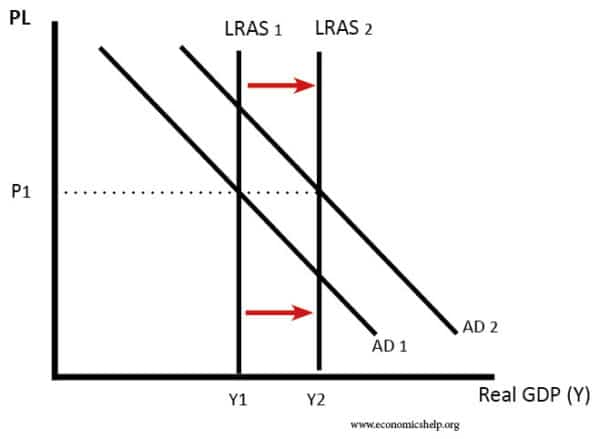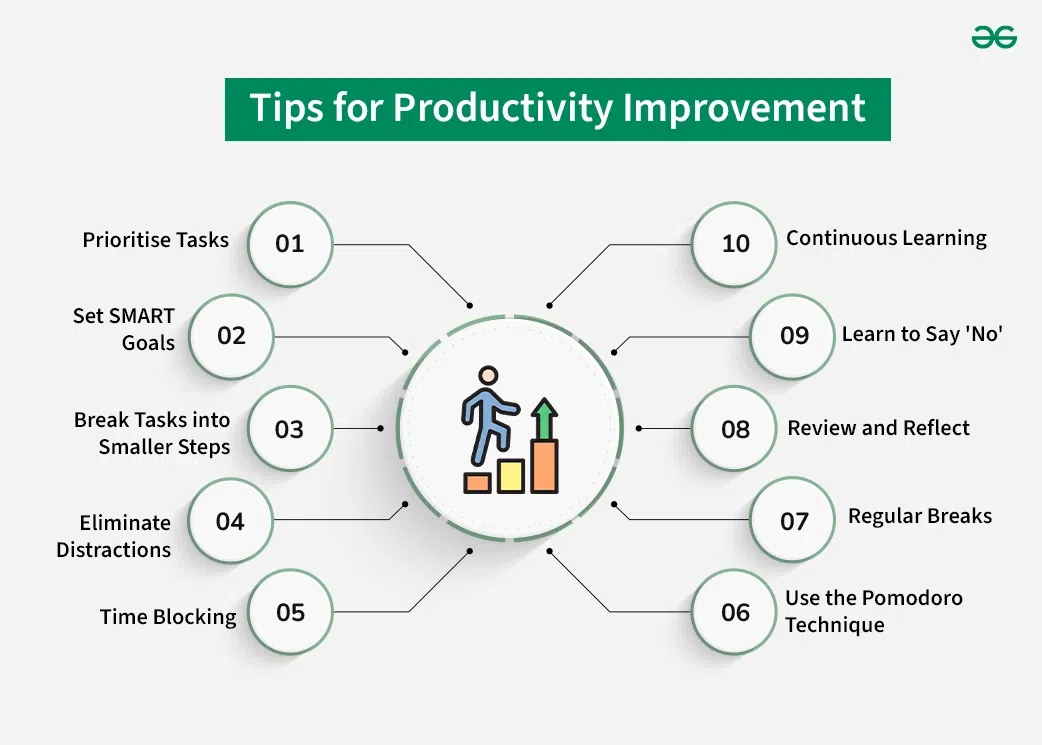AQA Specification focus:
‘Students should recognise that supply-side changes in the economy often originate in the private sector, independently of government, eg through productivity improvements, innovation and investment.’
Introduction
Private-sector supply-side change refers to improvements in economic performance driven by businesses and individuals rather than government policy. These changes shape productivity, competitiveness, and long-term growth.
Understanding Private-Sector Origins of Supply-Side Change
Supply-side changes are not always the direct result of government intervention. Instead, the private sector often generates improvements through its own decisions, strategies, and innovations. These private contributions are essential in driving long-term growth, boosting efficiency, and raising the economy’s productive potential.
Productivity Improvements
One of the most significant sources of private-sector supply-side change is enhanced productivity.
Productivity: The output produced per unit of input, usually measured as output per worker or output per hour worked.
Firms invest in new machinery, adopt better organisational practices, and streamline production methods.

This diagram demonstrates how productivity improvements, stemming from private-sector initiatives like technological advancements and capital investment, can shift the LRAS curve to the right, indicating an increase in the economy's potential output. Source

This infographic presents practical strategies for improving productivity within firms, including task automation and skill development, which are key drivers of private-sector-led supply-side changes. Source
Such improvements:
Lower unit costs of production.
Increase international competitiveness.
Raise the economy’s aggregate supply (AS) by shifting the long-run AS curve to the right.
Innovation and Technological Progress
Innovation in goods, services, and production techniques is another vital driver of supply-side change. Private firms develop new technologies to gain a competitive edge, often leading to wider benefits for the economy.
Examples include:
Automation and artificial intelligence improving efficiency.
Digital platforms reducing transaction costs.
Biotechnological advances enhancing productivity in healthcare and agriculture.
Innovation: The process of creating new products, services, or methods of production that improve efficiency, quality, or competitiveness.
Innovation enhances the economy’s capacity to grow without generating inflationary pressures.
Investment by Firms
Investment plays a central role in private-sector supply-side change. Firms expand capacity, modernise equipment, and upgrade infrastructure. Investment boosts both the quantity and quality of capital stock.
Higher investment → greater productive capacity.
Improved capital stock → more efficient production.
Multiplier effects can stimulate demand while raising supply in the long term.
Capital stock: The total value of machinery, equipment, and infrastructure available for production in an economy.
Role of Human Capital Development
While governments often fund education and training, many private firms invest in developing their workforce. Human capital improvements occur through:
On-the-job training.
Specialist skill development programmes.
Partnerships with universities and research centres.
This increases labour productivity, reduces structural unemployment, and enhances adaptability to technological change.
Entrepreneurship and Market Dynamics
Private-sector entrepreneurship is a core engine of supply-side growth. Entrepreneurs seek profit by identifying opportunities, introducing innovations, and responding to consumer needs. Their activity fosters:
Increased competition, leading to efficiency gains.
New industries and market creation.
Greater consumer choice and welfare improvements.
Entrepreneurship: The activity of starting and managing businesses, taking on financial risks in the hope of profit.
Market dynamics also push firms to operate efficiently, as those unable to adapt risk losing market share or exiting the market.
Globalisation and Foreign Direct Investment (FDI)
Private-sector decisions are also shaped by globalisation. Multinational corporations (MNCs) often relocate production, invest in new markets, and transfer technology. These actions generate supply-side benefits, such as:
Technology spillovers to domestic firms.
Increased competition driving efficiency.
Integration into global supply chains, expanding productive capacity.
FDI enhances the capital base and often raises skill levels in the host economy.
Private-Sector Research and Development (R&D)
R&D spending by firms is a key source of supply-side change. Companies engage in research to stay ahead of rivals, leading to innovations that spread through the economy.
Benefits of R&D include:
Creation of new products and processes.
Development of more efficient technologies.
Long-term improvements in trend growth.
Private-Sector Supply-Side Improvements vs Government Policy
It is crucial to differentiate between supply-side policies (government-driven initiatives) and supply-side improvements that arise organically from private actions.
Government: Implements policies like deregulation, tax reforms, and education spending.
Private sector: Generates improvements through innovation, investment, and entrepreneurship, independent of direct state involvement.
Both forces interact, but the private sector often provides the initial momentum for change.
Long-Term Impact on Aggregate Supply and Economic Growth
Private-sector changes have broad effects on the macroeconomy:
They shift long-run aggregate supply (LRAS) outward.
Raise the underlying trend rate of growth.
Improve international competitiveness.
Help achieve non-inflationary growth.
These changes enhance the economy’s ability to meet growing demand while maintaining stability.
FAQ
Private-sector innovation is often profit-driven, with firms seeking competitive advantage through new technologies, products, or processes. This creates rapid, market-focused improvements.
Government-led research tends to focus on long-term goals or socially valuable projects that may not be immediately profitable, such as renewable energy development. Both contribute to supply-side change but differ in speed, priorities, and scope.
When firms invest in employee training, they raise skill levels, making workers more adaptable to technological and structural changes.
This reduces mismatches between available jobs and worker abilities, lowering structural unemployment. It also increases mobility within the labour market, further improving efficiency.
Competition encourages firms to lower costs, improve efficiency, and innovate to maintain or grow market share.
Inefficient firms risk losing customers.
New entrants can challenge incumbents, forcing continuous improvement.
Consumers benefit from better products and lower prices, while the economy benefits from increased productivity.
FDI can bring technology transfer, new skills, and capital inflows, which boost productivity and supply capacity.
However, it cannot fully substitute for government policy, as supportive infrastructure, regulation, and education systems are often necessary for FDI to thrive and deliver long-term benefits.
Relying mainly on the private sector may lead to underinvestment in socially valuable areas, such as basic research, healthcare, or rural infrastructure, where profit potential is limited.
Additionally, market short-termism can discourage long-term investment, while unequal access to capital may cause uneven regional or sectoral growth.
Practice Questions
Define productivity and explain briefly how private-sector investment can improve it. (2 marks)
1 mark for an accurate definition of productivity: output per unit of input, e.g. per worker or per hour worked.
1 mark for linking private-sector investment (e.g. new machinery, technology, training) to higher efficiency or output.
Explain how innovation and entrepreneurship in the private sector can act as a source of supply-side improvements in the economy. (6 marks)
1–2 marks: Identification of innovation and/or entrepreneurship as private-sector activities.
1–2 marks: Explanation of how innovation leads to efficiency gains, new products, or improved production methods.
1–2 marks: Explanation of how entrepreneurship increases competition, efficiency, and consumer choice, contributing to aggregate supply improvements.
Answers should show clear application to supply-side changes in the economy. Full marks require both innovation and entrepreneurship to be addressed.

